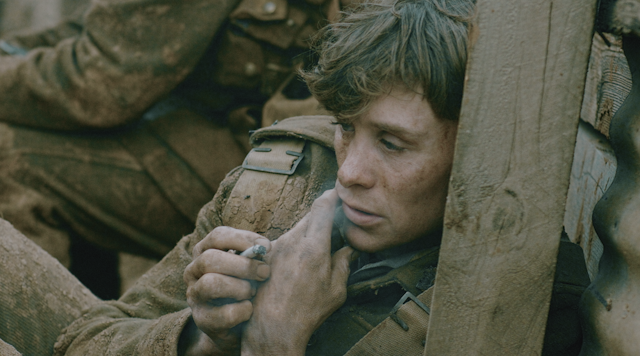Since Australia first began producing feature films, it has returned time and again to the subject of the first world war. Before Dawn, out in cinemas today, is the latest in this long line of productions.
Based on the real-life war diaries of Anzacs, many of which are held at the Australian War Memorial in Canberra, the film retells how Australian forces helped secure positions from which an attack on the Hindenburg Line could be launched.
As this has been written into history as one of Australia’s great contributions to the attack of the Western Front, the film provides an important essay on the human sacrifice the Anzacs made during WWI.
A sombre portrait of war
The Germans constructed the Hindenburg Line, also known as the Siegfriedstellung or “Siegfried Position” in German, as a defensive fortification on the Western Front in France during the winter of 1916–1917. Stretching between the towns of Arras and Laffaux in the country’s north, it served as a formidable barrier against Allied offensives.

The Hindenburg Line has been portrayed in various films, offering different national viewpoints. Most recently, director Sam Mendes’ 1917 (2019) depicts it from the British perspective, while Edward Berger’s 2022 film All Quiet on the Western Front provides insight from a German standpoint.
Similar to All Quiet on the Western Front, Before Dawn downplays the celebration of victory and nationalist sacrifice by instead providing a sombre portrait of the horrors of combat.
By the time Armistice Day arrives on November 11 1918, marking the end of the war, it is hardly a victory for the soldiers. Rather, it is a moment to absorb the trauma the living now carry, as they are literally surrounded by the corpses of their dead mates.
This portrayal comes through the fictionalised story of teenager Jim Collins (played by Levi Miller), who voluntarily leaves his family-run sheep station to join the ANZAC.

A young man’s film through and through
This backstory alone makes for an obvious comparison between Before Dawn and Peter Weir’s seminal film Gallipoli (1981). Both films depict the story of an 18-year-old stockman from Western Australia. That said, it would seem a little unfair to compare Before Dawn with the quality and emotional gravitas of Gallipoli.
Read more: Peter Weir's Gallipoli 40 years on: deftly directed and still devastating
By the time Weir directed his war epic he was well experienced, 38 years old and with four feature director credits under his belt. He also had experienced talent at his disposal, most notably screenwriter David Williamson, cinematographer Russell Boyd and actor Mel Gibson (hot off the heels of George Miller’s Mad Max 1 and 2).
In contrast, the director of Before Dawn is Jordon Prince-Wright, who is in his twenties. He worked with relatively inexperienced talent, including upcoming Aussie actors Levi Miller, Travis Jeffrey, Ed Oxenbould and Stephen Peacocke.
Prince-Wright’s prior credits include 2018 film The Decadent and Depraved, an independent western genre film set in outback colonial Western Australia.
Before Dawn was exclusively filmed in regional Western Australia – primarily on about 34 hectares of land near the beach town of Esperance. An extensive set was built to recreate the trenches and battlegrounds of Flanders, Belgium. Originally scheduled to begin in June 2020, the production team postponed filming for a year due to the pandemic.
Prince-Wright shares screenwriting duties with Jarrad Russell, who is receiving his first screenwriting feature credit on the film. It is also the first feature credit for cinematographer Daniel Quinn.
Before Dawn is certainly a young man’s film, both in what is being represented as well as in the cast and crew behind the production. This seems somewhat apt since, during WWI, the largest proportion of men fighting was comprised of 18 and 19 year olds.

Ambitious work
While you can’t deny the enthusiasm and ambition of the production team, the film does fall short of evoking the necessary empathy. It relies too heavily on composer Sean Tinnion’s overstated musical score to provide emotional weight.
Furthermore, despite more than 100 Aboriginal soldiers also serving on the front lines on the Western Front, Before Dawn is yet another production depicting Australian WWI soldiers as exclusively white men. The contribution of Aboriginal soldiers during WWI is yet to be satisfactorily fictionalised on the screen.

Despite these faults and oversights, Before Dawn offers an account of the important sacrifice Australia made in assisting the Commonwealth during the war. Coupled with other sources, it could function well as a teaching text for students learning about the Hindenburg Line.
Correction: this article originally stated the director was 19. This has been amended.
Read more: War movies are big earners. What does that say about us?

